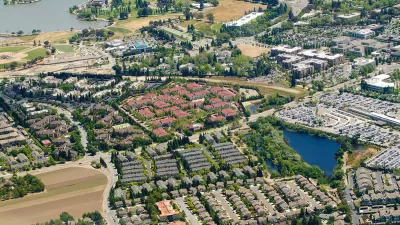Yonah Freemark provides a comprehensive explainer of the nuts and bolts of population analysis, applying that expertise to an examination of downtown population change.

Yonah Freemark writes an in-depth explainer post about population changes around the United States. Before beginning with an analysis of downtown populations, Freemark describes in clear detail his methodology. The introductory passage thus has a lot to teach about the benefits and shortcomings of the tools available for demographic analysis, which have advantages and disadvantages at every level (i.e., region, county, city, tract/block/block group).
Then, Freemark "delves into the question of how to measure population growth in urban environments by examining frequently used measures of demographic change and comparing them to alternatives," because "the question of what cities are growing and what cities aren’t is at the core of some of the most pressing debates in today’s urban planning–so understanding how a place’s population change is occurring is essential."
The post digs into his analysis to produce findings about the downtown areas of cities like Los Angeles, Las Vegas, Houston, Indianapolis, and New York City, among others, and some general trends from cities around the country. On that latter count, this passage is just one of the many important revelations and explanations from the article:
The U.S. has gained more than 140 million people since 1960, and the growth of its largest cities has at least to some degree corresponded to that; the total population of the 100 largest cities in 1960 grew from 47.5 million then to 57.4 million in 2014. Yet this growth has come largely through annexation and not through infill development or construction downtown…
Though taking a different route to the conclusion, that claim also supports another recent article debunking the commonly cited statistic that half of humans live in "cities." Freemark's post is thus another productive move to reorient the discussion about city growth.
FULL STORY: Reorienting our discussion of city growth

Trump Administration Could Effectively End Housing Voucher Program
Federal officials are eyeing major cuts to the Section 8 program that helps millions of low-income households pay rent.

Planetizen Federal Action Tracker
A weekly monitor of how Trump’s orders and actions are impacting planners and planning in America.

Ken Jennings Launches Transit Web Series
The Jeopardy champ wants you to ride public transit.

Rebuilding Smarter: How LA County Is Guiding Fire-Ravaged Communities Toward Resilience
Los Angeles County is leading a coordinated effort to help fire-impacted communities rebuild with resilience by providing recovery resources, promoting fire-wise design, and aligning reconstruction with broader sustainability and climate goals.

When Borders Blur: Regional Collaboration in Action
As regional challenges outgrow city boundaries, “When Borders Blur” explores how cross-jurisdictional collaboration can drive smarter, more resilient urban planning, sharing real-world lessons from thriving partnerships across North America.

Philadelphia Is Expanding its Network of Roundabouts
Roundabouts are widely shown to decrease traffic speed, reduce congestion, and improve efficiency.
Urban Design for Planners 1: Software Tools
This six-course series explores essential urban design concepts using open source software and equips planners with the tools they need to participate fully in the urban design process.
Planning for Universal Design
Learn the tools for implementing Universal Design in planning regulations.
Ada County Highway District
Clanton & Associates, Inc.
Jessamine County Fiscal Court
Institute for Housing and Urban Development Studies (IHS)
City of Grandview
Harvard GSD Executive Education
Toledo-Lucas County Plan Commissions
Salt Lake City
NYU Wagner Graduate School of Public Service





























